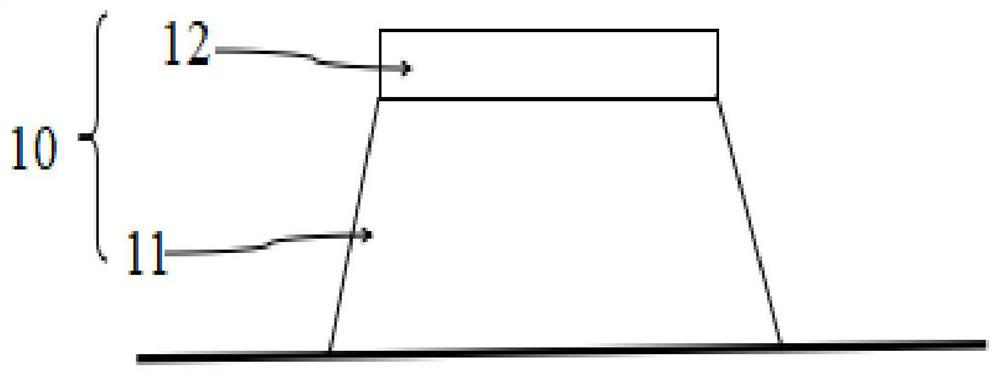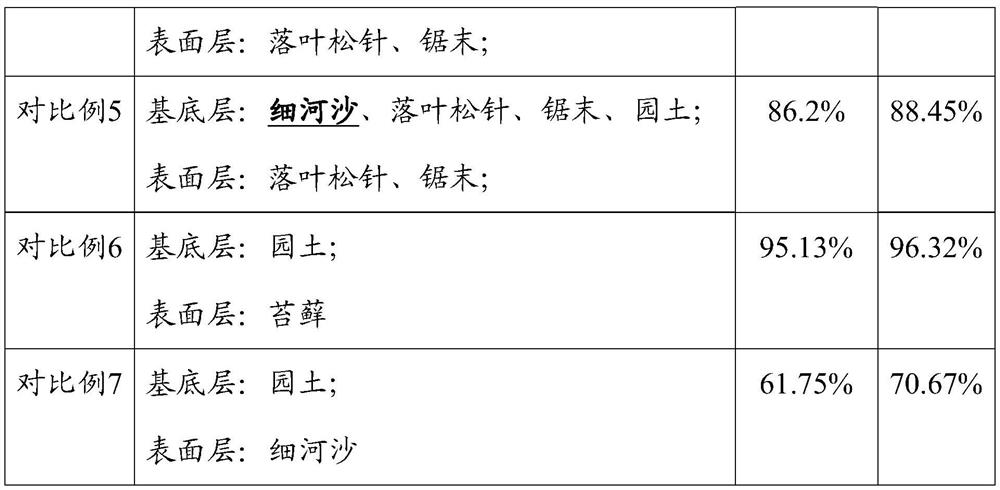Lonicera caerulea cutting medium seedbed and lonicera caerulea cutting propagation method
A technology of honeysuckle and cutting substrates is applied in the directions of vegetative reproduction, planting substrates, botanical equipment and methods, etc., which can solve the problems of high field management costs, death of seedlings, substrate collapse, etc., and achieves reduction of manual management difficulty and management. Cost, high rooting rate and survival rate, and the effect of increasing the moisture content of the substrate
- Summary
- Abstract
- Description
- Claims
- Application Information
AI Technical Summary
Problems solved by technology
Method used
Image
Examples
preparation example Construction
[0029] The present invention provides a kind of preparation method of the cutting substrate seedbed of Lonicera indigo Lonicera, which comprises:
[0030] S1: the leaf pine needles and sawdust are pulverized with a 1mm aperture pulverizer respectively, and set aside;
[0031] S2: In the selected and prepared nursery, use fine river sand, larch needles, sawdust, and garden soil as four cutting substrates according to the volume ratio of 1.8-2.2:0.4-0.6:0.4-0.6:0.8-1.2 after mixing , making a base layer with a length of 1-10m, a width of 0.8-1.2m, and a thickness of 18-25cm;
[0032] S3: After mixing the pulverized pine needles and sawdust according to the volume ratio of 0.4-0.6:0.4-0.6, spread them on the base layer to obtain a surface layer with a thickness of 4-8cm;
[0033] S4: 4-6 days before the cutting (preferably 5 days in advance), the base layer and the surface layer are sterilized with 0.4-0.8wt% (preferably 0.5wt%) potassium permanganate aqueous solution.
Embodiment 1
[0036] A kind of Lonicera japonica cutting propagation method of the present embodiment operates according to the following flow process:
[0037] (1) Grind the larch needles and sawdust with a 1mm aperture pulverizer, mix them evenly at a volume ratio of 1:1, and set aside.
[0038](2) In the selected and prepared nursery, use fine river sand, larch needles, sawdust, and garden soil as four cutting substrates, mix them evenly according to the volume ratio of 1.8:0.5:0.5:1, and make a length and width of 1.0 m, 20cm high seedbed base layer. Spread 5cm of mixed larch needles and sawdust substrate on the base layer of the seedbed. Disinfect the entire cutting seedbed with 0.5% potassium permanganate 5 days before cutting.
[0039] (3) During the period of June 10-15, select branches with a higher degree of semi-lignification in the current year on the mother tree of Lonicera indigo Lonicera.
[0040] (4) This branch section is cut into 10cm cuttage bar, and the flat cut mouth...
Embodiment 2
[0043] A kind of Lonicera japonica cutting propagation method of the present embodiment operates according to the following flow process:
[0044] (1) After the larch needles and sawdust are pulverized with a 1mm aperture pulverizer, they are mixed uniformly at a volume ratio of 0.8:1 and set aside.
[0045] (2) In the selected and prepared nursery, use fine river sand, larch needles, sawdust, and garden soil as four cutting substrates, mix them evenly according to the volume ratio of 2:0.4:0.5:0.8, and make a length and width of 1.0 m, 20cm high seedbed base layer. Spread 5cm of mixed larch needles and sawdust substrate on the base layer of the seedbed. Disinfect the entire cutting seedbed with 0.5% potassium permanganate 5 days before cutting.
[0046] (3) During June 15-20, select the branches with higher degree of semi-lignification in the current year on the mother tree of Lonicera indigo Lonicerae.
[0047] (4) cut this branch into 12cm cuttage strips, cut the mouth f...
PUM
 Login to View More
Login to View More Abstract
Description
Claims
Application Information
 Login to View More
Login to View More - R&D
- Intellectual Property
- Life Sciences
- Materials
- Tech Scout
- Unparalleled Data Quality
- Higher Quality Content
- 60% Fewer Hallucinations
Browse by: Latest US Patents, China's latest patents, Technical Efficacy Thesaurus, Application Domain, Technology Topic, Popular Technical Reports.
© 2025 PatSnap. All rights reserved.Legal|Privacy policy|Modern Slavery Act Transparency Statement|Sitemap|About US| Contact US: help@patsnap.com



